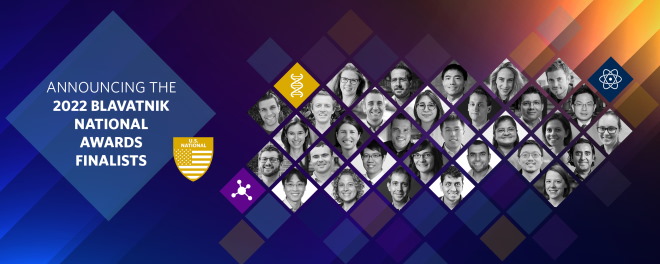
NEW YORK – June 1, 2022 – The Blavatnik Family Foundation and the New York Academy of Sciences announced 31 finalists today for the 2022 Blavatnik National Awards for Young Scientists, the world’s largest unrestricted prize honoring early-career scientists and engineers.
From that exceptional group, three winners—in life sciences, chemistry, and physical sciences & engineering—will be named on June 29, each receiving $250,000 as a Blavatnik National Awards Laureate.
The honorees, whose research is described below, were chosen from a highly competitive pool of 309 nominees from 150 leading universities and scientific institutions from 38 states across the United States.
"Since the Blavatnik National Awards were established nine years ago, many of our finalists have made extraordinary discoveries that have led to groundbreaking innovations in their respective fields,” said Len Blavatnik, founder and chairman of Access Industries and head of the Blavatnik Family Foundation.
Previous honorees have gone on to help develop COVID-19 vaccines and diagnostics, identify sustainable energy and battery technologies, tackle climate change through novel technologies, such as next-generation photovoltaics and sustainable new materials, and find cures for treatment-resistant diseases. Many also have received other prestigious honors, including being elected as fellows to the National Academy of Sciences or selected as MacArthur Foundation fellows.
“We are proud to honor their commitment to scientific excellence and celebrate their achievements. We look forward to following their continued success,” Blavatnik said.
President and CEO of the New York Academy of Sciences Nicholas B. Dirks said: “There are many prizes for lifetime achievement in science, but there are only a few prizes that honor scientists at this critical crossroads in their careers. Why does this matter? It’s at this stage where support and recognition can make a tremendous difference, giving enormous visibility to their research.”
“On behalf of the academy, I also would like to thank our judges and our scientific advisory council—all eminent scientists from across the U.S. We couldn’t successfully administer these awards without their continued support and the engagement of the broader scientific community,” he said.
Three highly-respected independent juries—each representing one of the award categories—selected these finalists and will determine the winning Laureates. Laureates must be faculty-level scientific researchers, 42 years of age or younger, and nominated to the competition by their university or research institution.
About the Blavatnik Awards for Young Scientists
The Blavatnik Awards for Young Scientists, established by the Blavatnik Family Foundation in 2007 and independently administered by the New York Academy of Sciences, began by identifying outstanding regional scientific talent in New York, New Jersey, and Connecticut. The Blavatnik National Awards were first awarded in 2014 and expanded in 2017 to honor faculty-rank scientists in the UK and Israel. By the end of 2022, the Blavatnik Awards will have awarded prizes totaling $13.6 million. Visit blavatnikawards.org.
About the Blavatnik Family Foundation
The Blavatnik Family Foundation is an active supporter of world-renowned educational, scientific, cultural and charitable institutions in the United States, the United Kingdom, Israel and other countries throughout the world. The foundation is headed by Len Blavatnik, a global industrialist, philanthropist, and founder and chairman of Access Industries, a privately held industrial group based in the U.S. with global strategic interests. Visit www.accessindustries.com or www.blavatnikfoundation.org.
About the New York Academy of Sciences
The New York Academy of Sciences is an independent, not-for-profit organization that since 1817 has been committed to advancing science for the benefit of society. With more than 20,000 Members in 100 countries, the Academy advances scientific and technical knowledge, addresses global challenges with science-based solutions, and sponsors a wide variety of educational initiatives at all levels for STEM and STEM-related fields. The Academy hosts programs and publishes content in the life and physical sciences, the social sciences, nutrition, artificial intelligence, computer science, and sustainability. The Academy also provides professional and educational resources for researchers across all phases of their careers. Please visit us online at www.nyas.org.
Media contact
Kamala Murthy kmurthy@nyas.org 212-298-3740
2022 Blavatnik National Awards Finalists in Life Sciences
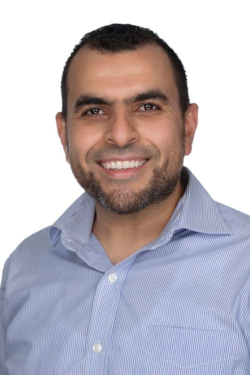
Mohamed Abou Donia, Princeton University
Metabolites produced by bacteria found in organisms, ranging from invertebrates to humans, hold important influence on survival and biomedical health. Innovative scientific techniques developed by microbiologist Mohamed Abou Donia, Ph.D., have uncovered the complex processes by which bacteria in marine organisms produce and release toxins to deter or kill predators. Abou Donia also uses computational and experimental methods to examine various bacteria-produced metabolites and how bacteria metabolize chemicals in humans, which could be used as a source of novel antibiotics and explain the varying efficacy of clinically used drugs, respectively. The impact and breadth of Abou Donia’s research on microbe-host symbiosis will advance our knowledge of ecology, conservation, drug discovery, and human health.
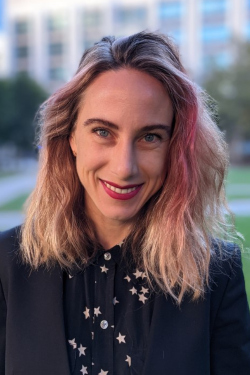
Polina Anikeeva, Massachusetts Institute of Technology
Neuroscientist Polina Anikeeva, Ph.D., is developing cutting-edge technologies to study the nervous system and treat neurological, psychiatric, and metabolic conditions. Drawing inspiration from biology, she creates multifunctional fibers capable of simultaneous recording and stimulation of neural activity thereby advancing neuroprosthetics—prosthetics that integrate with the nervous system to restore or enhance sensation or motion—and paving the way to treatments of conditions such as Parkinson’s disease or nerve injury. Working at the scale of proteins, she develops nanomagnetic tools that enable remote control of neuronal activity with magnetic fields and can alter organ-brain circuits that control the release of hormones, such as adrenalin, and offer promise to explore gut-brain circuits in connection to disorders of the nervous system. Anikeeva has pushed the frontier of biotechnologies that could treat paralysis, Parkinson’s disease, and endocrine disorders.
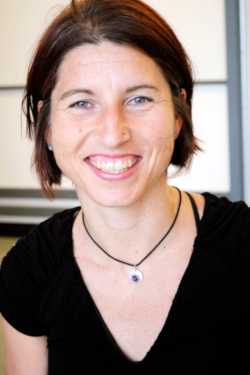
Kristen Brennand, Yale University
Neuroscientist Kristen Brennand, Ph.D., has created an ingenious method using stem cell technology to create neurons from the skin cells of people with schizophrenia to better understand and treat the disease. By combining these bioengineered neurons, CRISPR engineering techniques, and novel epigenomic analysis, Brennand explores the genetic and environmental risk factors for schizophrenia. She discovered that seemingly small genetic risk factors can have a significant impact on a neuron’s activity, size, and gene regulation. Brennand’s research offers opportunities to improve precision treatments as well as methods to prevent schizophrenia.

Elaine Hsiao, University of California, Los Angeles
Microbiologist Elaine Hsiao, Ph.D., has made remarkable discoveries to understand the enigmatic connection between the gut and nervous system, paving the way for innovative solutions to treat diseases. Hsiao studies how metabolites produced by bacteria in the gut can influence neurodevelopment, neurological functioning, and gastrointestinal disorders. She found that certain metabolites can reduce seizures or stimulate cells to synthesize serotonin, which is critical to maintaining healthy gut functioning. Hsiao also identified metabolites produced by the microbiome of pregnant women that regulate fetal neurodevelopment and impact behavior later in life. Hsiao’s findings form the foundations of translational initiatives to treat autism, epilepsy, and neurological co-morbidities of irritable bowel syndrome.
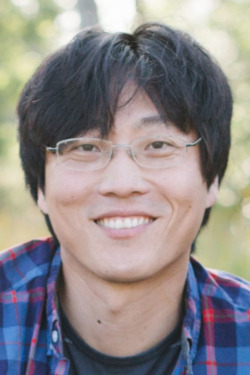
Chang Liu, University of California, Irvine
Synthetic biologist Chang Liu, Ph.D., is harnessing the power of genetic mutation and evolution in the laboratory to create new biomolecules with diverse functions at unprecedented speed and scale. Liu has pioneered a concept called “OrthoRep” that circumvents fundamental limits on cellular mutation rates in order to force the rapid evolution of specific genes until they create new biomolecules with desired functions. Impacting industrial biotechnology, therapeutics discovery, and basic biology, Liu’s innovative approaches have enabled the generation of novel enzymes that can reduce our reliance on hazardous chemicals, the creation of anti-SARS-CoV-2 antibodies, and new studies on how important biomolecules such as proteins and RNAs function and evolve.
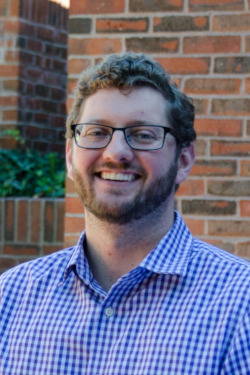
Benjamin Neale, Massachusetts General Hospital
As a world leader in genetics and health, geneticist Benjamin Neale, Ph.D., has advanced our understanding of the genes underlying neuropsychiatric disorders such as attention-deficit/hyperactivity disorder (ADHD), schizophrenia, and autism. With the recent avalanche of genomic data, innovative methods are required to advance our understanding of genetics. The computational methods developed by Neale have become some of the most widely used analytic tools to understand complex genetic traits. His computational methods have led to the discovery of a genetic variation that increases the risk for severe COVID illness. Neale’s research will transform our understanding of how genetics shape disease risk and enable the scientific community to find improved targets for the development of better therapeutics.
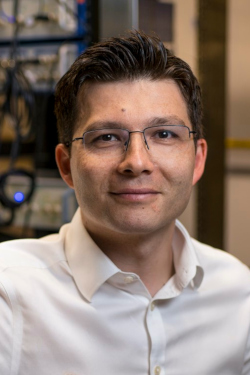
Sergiu Paşca, Stanford University
Neuroscientist Sergiu Paşca, M.D., has created ingenious techniques to visualize how the human brain develops and how this goes awry in people with neuropsychiatric illnesses. Paşca transforms skin cells from patients into stem cells and then develops ways to guide and create 3D cultures of tissue resembling specific parts of the brain, known as organoids. He also pioneered a novel approach to study neural communication in a novel self-organizing cellular system that he has termed assembloids. Paşca has used his organoids and assembloids to recapitulate and study neurodevelopment and what makes it unique in humans. Paşca’s research provides extraordinary opportunities to non-invasively study the neurobiology of diseases such as autism and schizophrenia.
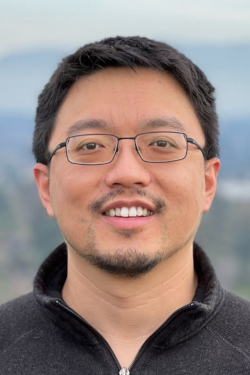
Stanley Qi, Stanford University
The revolutionary advancement in CRISPR technology by bioengineer Stanley Qi, Ph.D., has made CRISPR technologies more than mere gene-editing tools. His innovative CRISPR tools can control and capture, in real-time, the dynamic process of gene transcription, the movement of chromosomes, and can be used as an antiviral treatment against COVID-19. The large size of current CRISPR systems for gene therapy limits their ability to enter cells. Qi ingeniously reduced the size and created miniature CRISPR CasMINI, which could lead to treatments for genetic diseases that have been thought to be untreatable. Stanley Qi’s bioengineering acumen is ushering in the next generation of CRISPR technology on epigenome engineering to benefit science and human health.
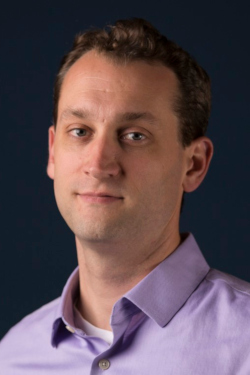
Robert Schmitz, University of Georgia
Robert Schmitz, Ph.D., is a plant biologist who performs groundbreaking research on plant epigenetics—the chemical modifications to DNA and associated proteins that alter gene expression—to unlock new methods to increase agricultural sustainability and food security. He found that some plant epigenetic mechanisms differ from those of animals, and that this unique mode of epigenetic modification impacts plant evolution and can inform crop breeding. For example, his discoveries in the epigenetics of maize (corn) offer plant breeders targets in the maize genome to improve crops performance, such as overall yield or resistance to disease. Schmitz’s work has set in motion the discovery and creation of new plant biotechnology that could help feed the world.
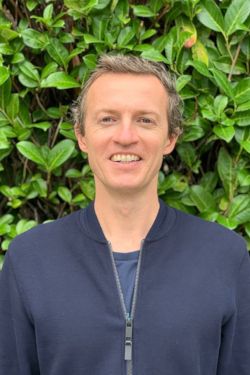
David Veesler, University of Washington
Molecular biologist David Veesler, Ph.D., made discoveries on the structure of SARS-CoV-2, the virus that causes COVID-19, which have had a resounding impact on our understanding and treatment of the virus. Using his expertise on how viruses enter cells, Veesler obtained at unprecedented speed, one of the first atomic-level description of the SARS-CoV-2 spike protein. His subsequent characterization of antibody responses in humans led to the creation of treatments and novel vaccines. Veesler’s invaluable research on viral spike proteins will protect humanity against new SARS-CoV-2 variants and future viral pandemics.
2022 Blavatnik National Awards Finalists in Chemistry
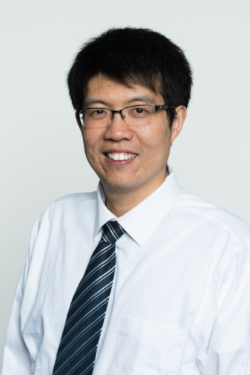
Guangbin Dong, University of Chicago
Organic chemist Guangbin Dong, Ph.D., has demonstrated an unrivaled ability to create techniques that selectively break and re-form molecules into useful chemicals. Dong utilizes strategies to “cut and sew” the bonds between carbon atoms in naturally found or readily available chemicals with unprecedented precision. This level of control in molecule synthesis has long been sought after to create specific medicines and consumer chemicals as well as to break down biomass into fuels or other useful compounds. Dong is now paving the way in inserting boron atoms into molecules that are typically unreactive, a technique that will lead to even more new functional chemicals and compounds.
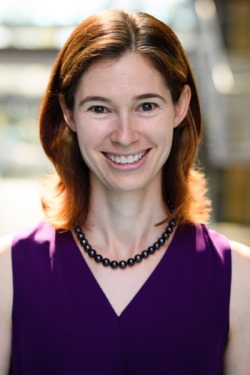
Abigail G. Doyle, University of California, Los Angeles
The production of drugs and consumer chemicals conventionally relies on expensive and rare ingredients. Organic chemist Abigail G. Doyle, Ph.D., has devoted her career to discovering new chemical reactions that are more efficient and rely on cheaper precursors. Doyle has demonstrated a radical new method that uses nickel, a common metal, instead of palladium, which is much more expensive, to accelerate chemical reactions. She is also designing efficient new methods to incorporate fluorine into molecules that are important for pharmaceuticals and agrochemicals. Doyle is now employing machine learning to rapidly discover new chemical reaction methods, which can dramatically accelerate the production of important and necessary chemicals.
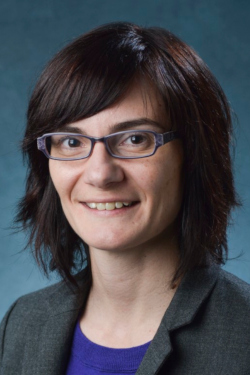
Gordana Dukovic, University of Colorado, Boulder
Physical chemist Gordana Dukovic, Ph.D., is tearing down disciplinary boundaries by pairing naturally-found enzymes with artificial nanocrystals to accelerate chemical reactions powered by sunlight. Nanocrystals and enzymes each have the power to activate chemical reactions on their own, but Dukovic has demonstrated that dramatic new reactions are possible when chemists combine nanocrystals and enzymes together and these hybrid compounds are exposed to light. Dukovic’s impressively interdisciplinary research has uncovered never-before-seen reactions and is providing new pathways to more efficient methods for the production of consumer chemicals and drugs.
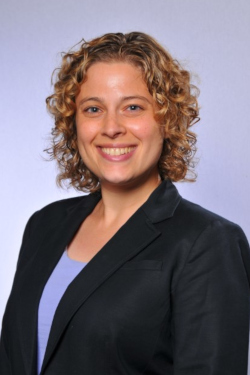
Danna Freedman, Massachusetts Institute of Technology
The second quantum revolution brings the promise of incredibly powerful technological tools, with quantum computers and sensors customized to specific tasks. Inorganic chemist Danna Freedman, Ph.D., studies quantum bits—or qubits, the building blocks of quantum computers—based on specific properties of individual molecules. Using incredible chemical control, she tunes both the physical and electronic structure of the molecular-based qubit to improve qubit performance and capabilities. Freedman has elevated molecular qubits to the cutting edge of quantum information science by achieving record stability and demonstrating optical read-out of a molecular qubit state. Thanks to Freedman’s momentous discoveries, molecular qubits will certainly be a major player in future quantum information technology.
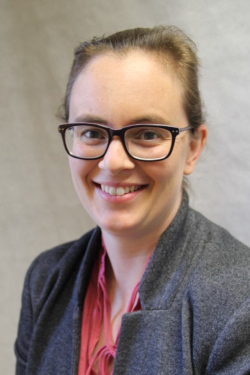
Renee Frontiera, University of Minnesota, Twin Cities
Physical chemist Renee Frontiera, Ph.D., is pushing scientists’ ability to track molecules and chemical reactions to the ultimate limits of space and time. Raman spectroscopy has long been a bread-and-butter technique in chemistry to characterize molecules, but Frontiera has shattered its technical limitations by making it possible to track the ultrafast motion and reaction of molecules on the scale of femtoseconds, or quadrillionths of a second. These powerful techniques have already empowered Frontiera and other scientists to answer fundamental chemical questions in fields as diverse as biology, energy, and the environment.
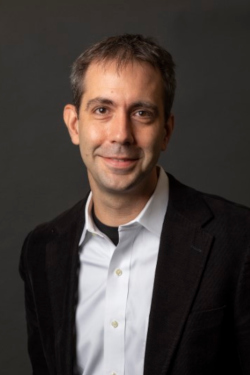
Jacob M. Hooker, Massachusetts General Hospital
Conventional PET imaging has limited capabilities for monitoring complex chemistry and the actions of drugs in the brains of living patients. Chemical neuroscientist Jacob M. Hooker, Ph.D., is breaking these barriers by creating new radioactive tracer molecules that elucidate complex human brain chemistry and drug response mechanisms. Hooker’s novel molecules can uniquely characterize certain behaviors of various brain cells in patients and tie those behaviors to specific challenges in mental health including diseases like Alzheimer’s, ALS, and Huntington’s and disorders like autism and schizophrenia. With these new understandings, Hooker is developing therapeutic concepts and drugs that offer new solutions to our global challenges in brain health.
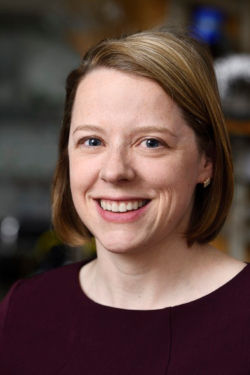
Rebekka S. Klausen, Johns Hopkins University
Rebekka S. Klausen, Ph.D., is repurposing polymer chemistry to upend how we manufacture electronics. Instead of taking 12-inch wide silicon crystals and carving them up into computer chips, Klausen is creating silicon molecules and polymers atom-by-atom to build tailor-made electronic devices. This strategy relies on an unparalleled level of control that Klausen has demonstrated synthesizing silicon-based molecules. She is also advancing methods to more effectively mix different kinds of plastics, which is key to mixed-stream recycling. Klausen’s work will shape future technology from computers to sustainability.
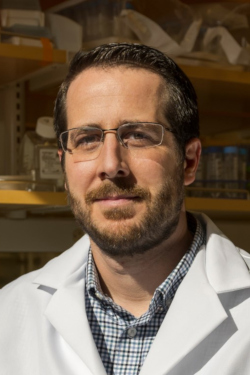
Jason S. McLellan, University of Texas at Austin
Jason S. McLellan, Ph.D., is the first biochemist to have stabilized and distributed the SARS-CoV-2 spike protein, a necessary step in developing vaccines and antibody therapies. McLellan determines and manipulates the atomic structures of viral proteins that facilitate entry into host cells, providing insight into how to prevent infections. At the outbreak of the COVID-19 pandemic, his lab rapidly produced and determined the structure of a stabilized SARS-CoV-2 spike protein, and his work was key to developing all COVID-19 vaccines authorized for use in the United States. McLellan also produced a second-generation spike protein that is being licensed royalty-free to developing nations to manufacture their own low-cost, effective vaccines.
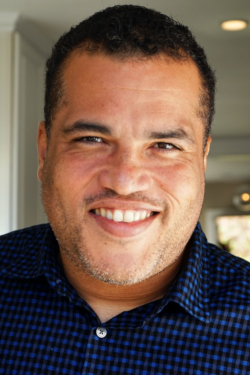
Hosea M. Nelson, California Institute of Technology
Hosea M. Nelson, Ph.D., is unlocking unforeseen potential for organic chemists to design and synthesize new molecules. Nelson has popularized a technique, called microcrystal electron diffraction (MicroED), that can determine the positions of atoms within small molecules with unprecedented detail—particularly small molecules that are useful for drug development and industrial chemical production. Nelson and his team are harnessing this technology to understand the behavior of important biomolecules in the body, hopefully leading to new treatments for disease. MicroED has already accelerated the rate of drug development and will pave the way for the discovery of entirely new classes of therapeutic molecules.
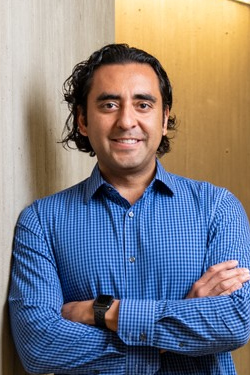
Yuriy Román-Leshkov, Massachusetts Institute of Technology
A future free of fossil fuels will rely on chemical technologies like those being developed by chemical engineer Yuriy Román-Leshkov, Ph.D. Román-Leshkov is sustainably transforming earth-abundant materials into fuels and consumer chemicals by dramatically exploring new ways to control chemical reactions. Typically, chemists control a reaction by changing catalysts, varying the surface area of reactants, or tuning the temperature or acidity, but Román-Leshkov is going even farther. He confines molecules in small spaces or applies electric fields to molecules bound to surfaces. These techniques enable his team to enhance reactions that require less energy and use fewer rare and toxic chemicals. Román-Leshkov is expanding our toolkit for chemical reactions and paving the way for industry to use less energy and fewer rare materials.
2022 Blavatnik National Awards Finalists in Physical Sciences & Engineering
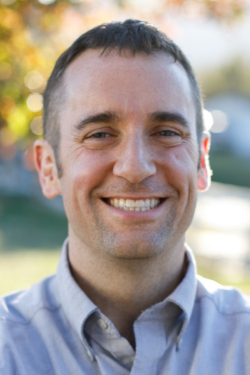
Patrick E. Hopkins, University of Virginia
Patrick E. Hopkins, Ph.D., is a world-renowned expert in nano-scale thermal transport and is developing important thermal technologies to reduce, reuse, and recycle energy to help curb the growing energy needs of our society. His impressive list of discoveries includes advanced thin film materials with record setting high and low thermal resistances, including exceptionally high thermal conductivity films that outperform the thermal properties of current state-of-the-art diamond films, thermal barrier coatings that improve the efficiency of combustion engines, and unusual thermal switches that operate like light bulbs, but are made from the proteins found in squid teeth and enable on-demand temperature control. Hopkins has provided unprecedented insights into the wave-particle duality of phonons and has also developed an extremely novel type of thermal diode (metal-semiconductor) that easily shuttles heat—not electrons—across a metal-semiconductor interface and could lead to advanced applications in photonic computing.
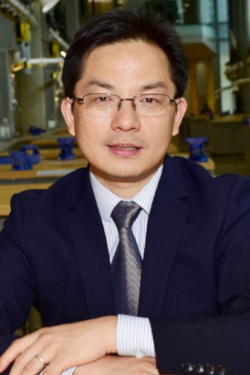
Liangbing Hu, University of Maryland, College Park
Liangbing Hu, Ph.D., is a leader in the field of sustainable materials. As a self-described “wood nanotechnologist,” Hu has reinvented wood by creating extremely novel wood-based technologies for the replacement of energy-intensive structural materials (e.g., steel and glass). For example, he developed wood that is as strong as steel but six-times lighter, as well as wood products that are as transparent as glass but with much better thermal insulation. Hu has also reinvented furnace technology to achieve record-high heating and cooling rates, which led to his discovery of high entropy catalysts composed of immiscible elements. These first-ever made, so-called, “high entropy nanoparticles” have proven to address the stability issue of a broad range of catalysts via the entropy stabilization effect. This reinvented furnace approach can also sinter a broad range of energy materials toward sustainability (e.g., battery membranes, metals, and oxides for operation in extreme conditions) at a rate of 1,000–10,000-times faster than current sintering techniques using a conventional furnace.
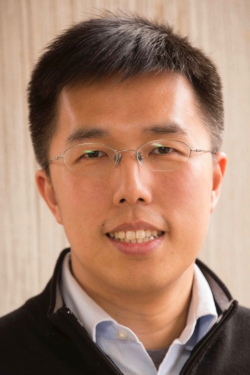
Liang Jiang, University of Chicago
Liang Jiang, Ph.D., a theoretical physicist working in the field of quantum information science, is leveraging the properties of quantum mechanics and the power of computer science and mathematics to advance quantum computing, data security, and quantum communication. In quantum computing, error is an obstacle to accuracy and computational advantage. Jiang is discovering innovative ways to scale imperfect (error-tolerant) quantum machines. He is developing the important theoretical frameworks and quantum protocols that will make the most promising quantum computing hardware technologies—such as the superconducting quantum bit, qubit—controllable and more error-aware. He is narrowing the wide gap between theoretical computer science and the necessary, scalable quantum hardware approaches needed to make quantum computing advantageous and successful.
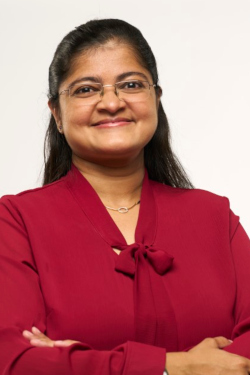
Mansi M. Kasliwal, California Institute of Technology
Mansi M. Kasliwal, Ph.D., is one of the most prominent astrophysicists of her generation. Her research, on the electromagnetic radiation produced by the first neutron star merger ever detected by the Laser Interferometer Gravitational-Wave Observatory (LIGO) established the importance and utility of infrared radiation in characterizing the production of heavy elements, like gold, during these cataclysmic events. Her work has garnered international recognition and placed her as one of the true leaders in the very competitive field of observational astrophysics. Kasliwal led a global, scientific network of telescopes called GROWTH (Global Relay of Observatories Watching Transients Happen). Kasliwal’s broad perspective of the Universe and her capacity to build and deploy new instruments, such as Palomar Gattini IR and WINTER (Wide-field INfrared Transient ExploreR), have opened up a new infrared window into the study of our dynamic Universe.
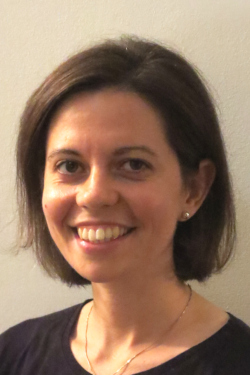
Raffaella Margutti, University of California, Berkeley
Raffaella Margutti, Ph.D., is an observational astrophysicist studying a variety of astrophysical transient phenomena and catastrophic events, such as stellar explosions, stellar disruptions and stellar mergers where physics happens under extreme conditions not achievable on planet Earth. She utilizes panchromatic observations across the electromagnetic spectrum to shed new light on the mysterious nature of dying stars, mergers of neutron stars and newly-formed compact objects, such as black holes. Margutti’s recent achievements include the characterization of the only known celestial object detected with gravitational-waves and light (GW170817), as well as the discovery of X-ray and radio emission from a new type of explosion, known as Fast and Blue Optical Transients (FBOTs). FBOTs are providing the first important glimpses into how compact objects behave just days after they form.
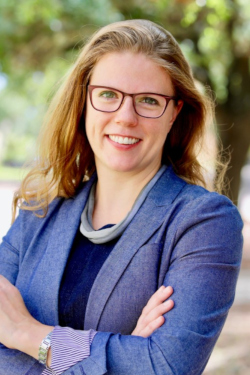
Emily Pentzer, Texas A&M University
Emily Pentzer, Ph.D., is a polymer scientist working at the interface of organic synthesis and materials chemistry, with a special focus on engineering applications. She has pioneered the use of 2D-particles (graphene-oxide nanosheets) to stabilize liquid interfaces, like oil and water, that do not typically mix with each other, and has constructed new materials with incredible engineering properties. Pentzer established a single-step method to completely encapsulate ionic liquids. She has also developed a new 3D-printing technique that incorporates phase-change materials (materials that absorb and release large amounts of heat when melting or freezing) with enhanced mechanical properties. These and other fundamental advancements in polymer science from Pentzer’s lab have enabled new technology applications, including passive climate-control technologies for buildings, energy storage devices like supercapacitors, direct air capture technologies for CO2, gas sensing technologies, and more.
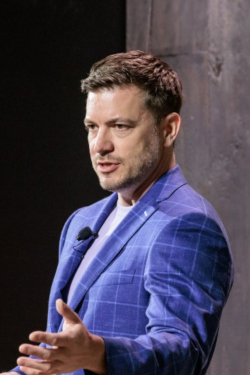
Robert Shepherd, Cornell University
Robert Shepherd, Ph.D., launched an entirely new field, known as soft robotics, and is leading the way forward for the next technological revolution in robotics, fusing artificial intelligence with the latest advances in materials science and machinery. His 3D-printing methods have made soft robotic materials, like self-healing elastomer materials (polymers with both viscosity and elasticity) and conductive hydrogels, a reality. Taking inspiration from the sea, Shepherd has created a new class of soft robots that can replicate the textures of rocks and plants. His development of a tremendously successful autonomous soft robot technology—the holy grail of soft robotics—is powered by a hydraulic, cardiovascular “Robot Blood” network that utilizes redox flow batteries and is re-writing the script on how to design and fabricate soft robot technologies.

Vinod Vaikuntanathan, Massachusetts Institute of Technology
Computer scientist Vinod Vaikuntanathan, Ph.D., studies cryptography, a discipline that utilizes computationally intractable mathematical problems to protect the privacy and integrity of data and computations. He has developed powerful new encryption systems, such as fully homomorphic encryption, that allow computations to be performed on encrypted data, resolving the conflict between privacy and the availability of big data. His innovative schemes and protocols utilize tools from geometry to design powerful mechanisms in cryptography that will help keep data and information secure well into the future.
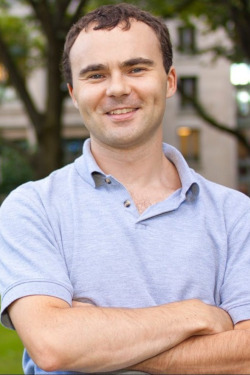
Conor Walsh, Harvard University
Conor Walsh, Ph.D., is a mechanical engineer who has catapulted the field of wearable robotics in a radically new direction. He has created a new class of lightweight, flexible soft wearable robot technologies that significantly contribute to our understanding of human-machine interactions. One version of his lab’s portable, wearable robotic system, called the “soft exosuit,” improves mobility in healthy individuals by almost 15%, and another has been shown to improve walking speed and distance for stroke survivors, thus having the potential to dramatically improve their quality of life. Other application areas include assisting those with upper extremity weakness to perform activities of daily living and preventing injuries of workers performing physically strenuous tasks. His wearable “soft exosuit” technologies have been translated into commercially-available therapeutic devices through several collaborative start-up endeavors.
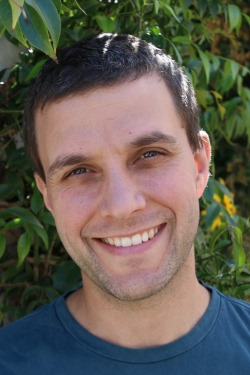
Andrea Young, University of California, Santa Barbara
Physicist Andrea Young, Ph.D., works in the burgeoning field of two-dimensional materials. His work on graphene van der Waals heterostructures--ultrathin materials made of single atomic layers of carbon, stacked and held together by weak van der Waals forces--has enabled radical new approaches to materials design and to the experimental discovery of novel electronic phases of matter. Most recently, Young discovered exotic superconductivity in perfect crystalline forms of graphite. Researchers across the field have adopted his techniques and experimental breakthroughs, and his work is pointing the way toward new generations of quantum and classical electronic devices.
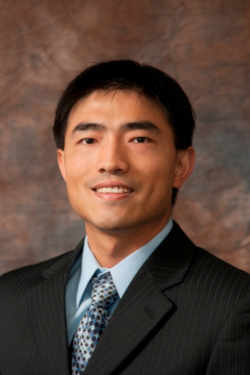
Guihua Yu, University of Texas at Austin
Guihua Yu, Ph.D., a materials scientist and nanotechnologist, designs sustainable polymer technologies to address vital energy and environmental challenges. He has created an exciting new line of polymer materials, called energy hydrogels. He has found novel ways for these materials to transmit electricity by controlling their electron and ion transport. By tuning the way the polymer and water molecules interact, Yu has discovered that these hydrogels have record-breaking solar evaporation rates as solar steam generators and have found useful technological applications in seawater desalination and water purification, as solar-powered water-harvesters for sustainable agriculture, and as next-generation energy storage materials and efficient electrocatalysts for solar fuels and nitrogen fixation to produce valuable chemicals.
###